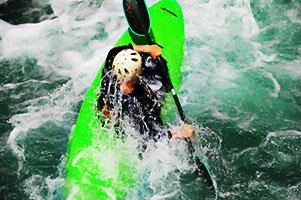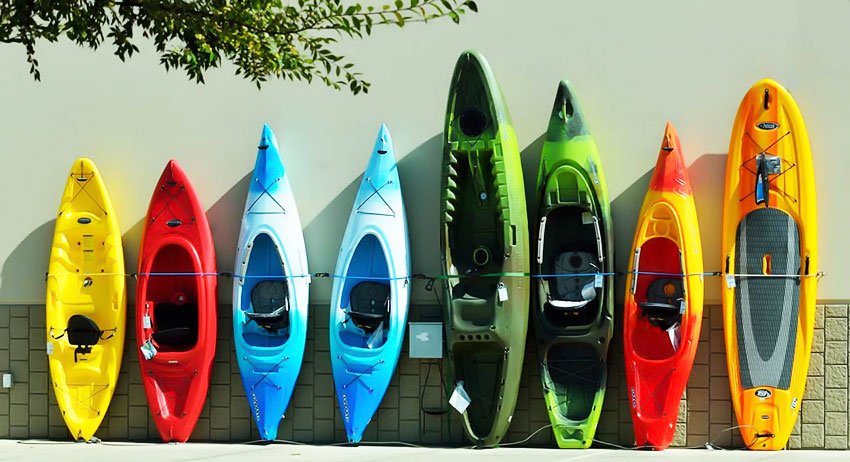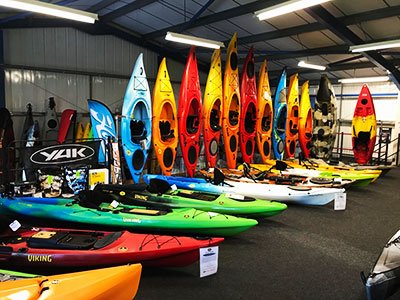It is safe to say that every kayak comes with its very own weight capacity. Many people have a tendency to misunderstand these limits. Thus, this article will talk about the kayak weight limit and clear all the misconceptions regarding this subject matter.
What is a Kayak Weight Limit?
If a kayak has 400-pound weight capacity, it doesn’t mean that it will support a person who weighs 400-pounds. That particular kayak will be able to support 400 pounds and still be able to float on the water. This means that the person using this kayak, including all his belongings should not exceed the 400-pounds of weight.
Generally speaking, you should weight a lot less than the kayak weight limit. Preferably 20 to 30 percent lower than the weight if you want your kayak to be above the water level. This will also help you to safely row your kayak without facing any obstacles. The rest of the empty space should be occupied by your gear and equipment. You should also try to leave some room and not touch the weight limit. Balancing your kayak can be tricky under unpredictable waters, thus you should not try to touch the weight limit.

The weight limit is a number assigned by the kayak manufacturer. This number also helps a customer to identify a suitable kayak for their needs. The industry has failed to set a standard for determining the weight capacities of kayaks. This means that most manufacturers set their weight limits in an arbitrary way, often consuming the customers. You should not exceed this weight limit, as it may destabilize your kayak.
If you weigh more than an average person, you should look to buy a kayak that exceeds your weight. For example, if you weigh 250 pounds, you should buy a kayak with a 450 pound weight limit. The less weight you put on your kayak, the more efficient your kayaking experience will be. If you overload your kayak, it will delivery a comparatively poor performance and hinder your experience. Thus, you should aim for attaining maximum efficiency with your kayak as this will enhance your kayaking experience.
There are mainly four popular types of kayaks:
- Sit on top kayak: The kayak would be just above the water line with most of it submerged.
- Recreational kayak: This sort of kayak is perfect for using in well protected lakes where the waters are calm.
- Touring kayak: These are long kayaks that can be used under protected waters.
- Sea kayaks: Sturdy and well-made kayaks that can be used under choppy and unpredictable waters.
How to Avoid Water Coming into the Scupper of your Kayak
 It is almost impossible to keep your kayak dry. That may be the case but it is possible to avoid loads of water from rushing through the scuppers. The pro tip would be to efficiently row the kayak. This efficiency basically means that the kayak would go further per paddle stroke. Scupper plugs can help to stop the spread of water as well.
It is almost impossible to keep your kayak dry. That may be the case but it is possible to avoid loads of water from rushing through the scuppers. The pro tip would be to efficiently row the kayak. This efficiency basically means that the kayak would go further per paddle stroke. Scupper plugs can help to stop the spread of water as well.
In order to increase the efficiency of your kayak, you should aim to touch half of the weight limit number. Which means that the sum total of you and your gear should not exceed 50 percent of the weight limit.
Identifying the Correct Weight Limit of Kayak

If you are a new kayaking enthusiast, it may seem challenging to figure out the correct weight limit of your kayak. Thus, initially you need to identify the weight of your gear and equipment as well as your own weight. The ideal kayak would leave some room and not touch the weight limit. If you occupy 60 to 70 percent of the weight limit, that would be appropriate for your kayak. Decrease this number if you want a more efficient kayak. Keep in mind that the weight distribution of the kayak should also be properly managed.
In order to stabilize the boat, position your equipment and gear in a balanced manner. Once you calculate all the weight you will occupy, then only buy your kayak. Don’t try to buy a cheap kayak as that may compromise your kayaking experience.
How to Find Great Deals on Kayaks
Entry level kayaks often come with lower weight capacities. If you plan on buying new kayaks, you can get ones with around 450 to 500 pound capacities. Keep in mind that newer kayaks can cost upwards of more than a thousand dollars. To get around that problem, you can get great deals on used and older kayaks. If your budget is lower than a thousand dollars, you should buy used kayaks. These kayaks are made with better materials and have higher weight capacities.
 The more you use the kayak, the better you will get at paddling your boat. When you are just starting out, aim to buy a kayak with a high weight limit. It is not possible to increase the weight limit of the kayak once you purchase it. Although you can increase the stability of your kayak.
The more you use the kayak, the better you will get at paddling your boat. When you are just starting out, aim to buy a kayak with a high weight limit. It is not possible to increase the weight limit of the kayak once you purchase it. Although you can increase the stability of your kayak.
So, put a lot of thought before buying a new or used kayak. Once you get a hang of your kayak, you can decrease the efficiency of your kayak. This is because you will be a more experienced paddler by that time. Thus, in the initial stage, do not exceed more than 50 percent of the weight limit of your kayak. That will mean that your kayak can experience the maximum amount of efficiency as you paddle your boat.
The weight is a major factor behind the decision to purchase a kayak. Many people make a mistake during this phase as they fail to buy the kayak with the correct weight limit. The concept of the weight limit is not that difficult once you grasp the idea of the kayak weight limit. Thus, I hope this article will be able to give sufficient information regarding this matter.
Learn More: Can You Eat Muskie?

This article was extremely helpful! Thank you so much. I better understand now how the weight limit can be deceiving.